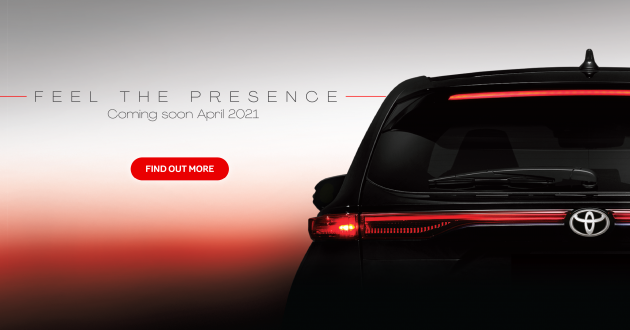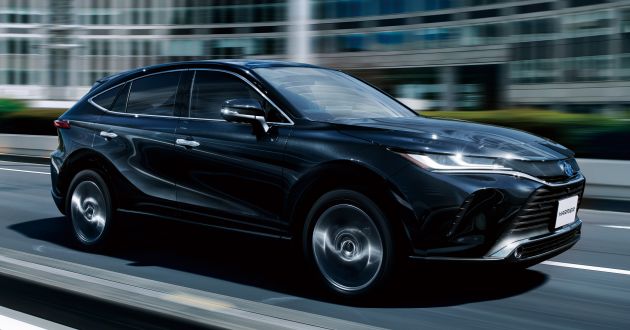It’s official – UMW Toyota Motor has just teased the new Toyota Harrier, with the launch confirmed to be taking place this month. The company has already opened registrations of interest for the fourth-generation SUV, so expect it to arrive very, very soon.
No details have been revealed just yet, but the specifications should mirror those being sold by our neighbours in Singapore, the only other export market so far (apart from the United States, of course, where the Harrier is being sold as the new Venza).
Two powertrains are being offered there, with the base model powered by a 2.0 litre naturally-aspirated Dynamic Force four-cylinder engine, producing 170 hp at 6,600 rpm and 203 Nm from 4,400 to 4,900 rpm. Drive is sent to the front wheels through a Direct Shift-CVT, enabling the Harrier to get from zero to 100 km/h in 9.7 seconds on its way to a top speed of 190 km/h. Fuel consumption is rated at 6.5 litres per 100 km.
There’s also a hybrid version that receives a 176 hp/221 Nm 2.5 litre Dynamic Force engine and a 118 hp/202 Nm electric motor to deliver a total system output of 215 hp. The petrol-electric model is quicker to 100 km/h (8.1 seconds) but has a lower top speed (180 km/h); the main benefit, however, is a combined fuel consumption figure of just 4.7 litres per 100 km.
As a refresher, the Harrier is based on the same Global Architecture – K (GA-K) platform as the Camry and RAV4, on which its closest sibling, the next Lexus NX, is also expected to be based. On the outside, the new Harrier is slightly larger than the outgoing model, albeit quite a bit lower for a sportier look. Details include slim LED headlights, a closed-off upper grille, a large lower grille, a sleeker coupé-like roofline and full-width LED taillights.
Inside, the Harrier is dominated by a diamond-shaped centre console inspired by a horse’s saddle, sitting within the wraparound faux leather-trimmed dashboard. A freestanding infotainment panel sits on top, although it remains to be seen if our car will feature an OEM touchscreen unit (as per the RAV4) or the same aftermarket systems found in the rest of the lineup.
In Singapore, the Harrier comes as standard with keyless entry, push-button start, dual-zone auto climate control with rear air vents, Nanoe air ioniser, an eight-way power-adjustable driver’s seat, fabric upholstery, an auto-dimming rear-view mirror, auto lights and wipers, a 10.5-inch head-up display, a Qi wireless charger, six speakers, a reverse camera and a hands-free powered tailgate.


Other models get genuine leather upholstery, front seat ventilation, eight-way powered passenger-seat adjustment, driver’s seat memory, illuminated side sill scuff plates, a cargo scuff plate, a digital rear-view mirror camera and a new electrochromic panoramic glass roof.
Safety-wise, all models come with seven airbags and traction control, plus a full range of Toyota Safety Sense systems. The latter includes autonomous emergency braking with pedestrian and cyclist detection, adaptive cruise control, lane centring assist, lane departure warning and adaptive high beam. Expect Malaysian cars to get similar, if not identical, specifications as those down south.
As for pricing, expect a bit of a jump over the current model to give some breathing space, as the RAV4 already tops out at RM215,665 (for your information, the outgoing car starts from RM234,510). What do you think – will the new Harrier be a worthy successor to the moderately successful third generation, and are you still disappointed there is no turbo engine this round? Sound off in the comments section after the jump.

























The post 2021 Toyota Harrier teased, M’sian launch this month appeared first on Paul Tan's Automotive News.




0 Comments